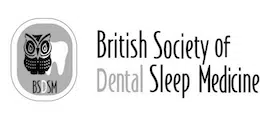A mandibular advancement device (MAD) is a gadget that is inserted into the mouth before going to sleep. It holds the lower jaw (mandible) and tongue forward, away from the back of the throat, thus holding the upper airway open. Most MADs are moulded to fit over the patient’s teeth, with the upper jaw acting as a fixed platform to anchor the device as it holds the lower jaw forward. Most models of mandibular advancement devices fit entirely within the mouth.
Mandibular Advancement Device
What is a mandibular advancement device for?
The main purpose of a mandibular advancement device is to prevent snoring.
There are many reasons why people snore, and while some patients will not be bothered by it, others can find it impacts their lives or their partner’s lives significantly. If your snoring is causing problems, your doctor, dentist, or a sleep specialist could help in identifying the source of the snoring and taking appropriate measures.
If the cause of your snoring is restriction of the airway at the back of your throat by the surrounding tissue or the tongue, a mandibular advancement device may be recommended, as it holds the tongue forward, opening the airway and reducing or eliminating snoring.
What do mandibular advancement devices involve?
There are different types of mandibular advancement devices. Broadly speaking, there are three categories:
- “Boil and bite” – these can be bought and moulded by the patient by heating and softening the resin or silicon in hot water and biting into it as it cools, making it set in a mould of the patient’s bite.
- Semi-custom – the patient makes a mould of their teeth, which is then sent away for a custom-made, good-quality device to be made from it.
- Custom – some dentists and sleep specialists offer custom-made MADs, which are refined and fitted specifically for each individual patient, delivering the perfect fit.
Many modern mandibular advancement devices are adjustable to a degree.
It is important to keep MADs clean, which can be achieved by placing them in hot water and brushing them in the way we brush our teeth.
Mandibular advancement device side effects
Mandibular advancement devices may cause a little discomfort, particularly at first. The teeth may ache a little and the jaw may be stiff. However, pain is highly unusual. If wearing the device is painful, you should stop immediately and consult your doctor or dentist.
Other side effects may include:
- Hypersalivation
- Mouth dryness
- Teeth moving out of alignment
Alternatives to a mandibular advancement device
Mandibular advancement devices don’t work for everyone – in fact, patients with dentures will be unable to use one, as there is nowhere to anchor the device.
Tongue stabilising devices (TSDs) are an alternative, while preventative measures such as losing weight, reducing alcohol intake, and staying hydrated can also help the patient to stop snoring.






